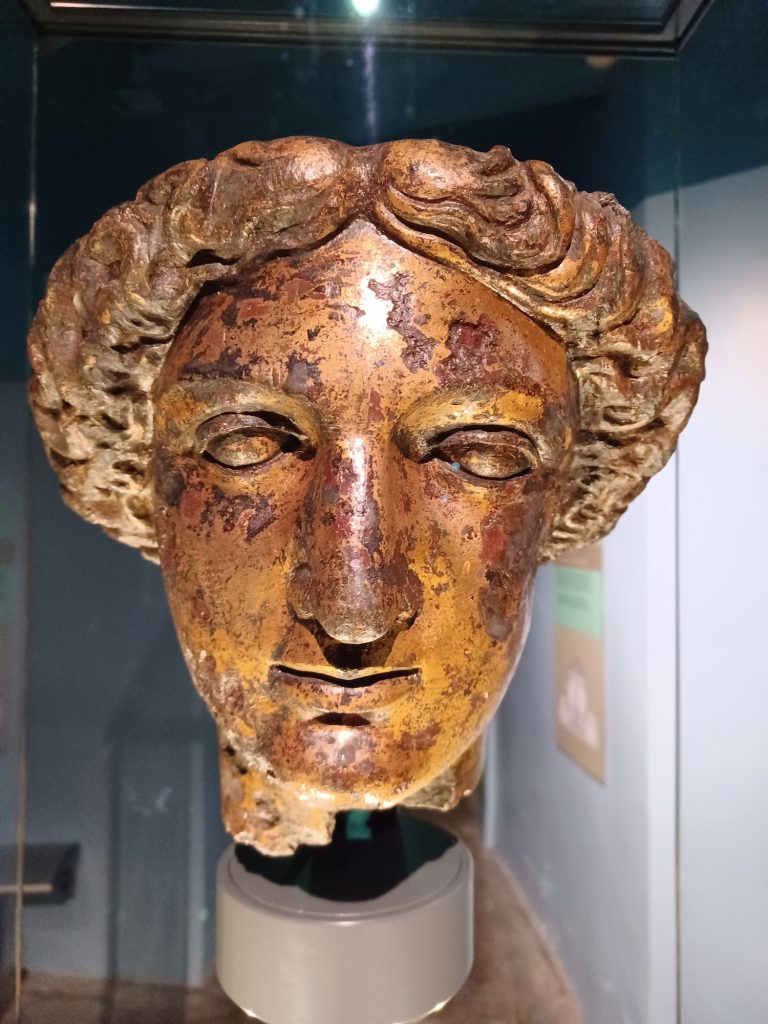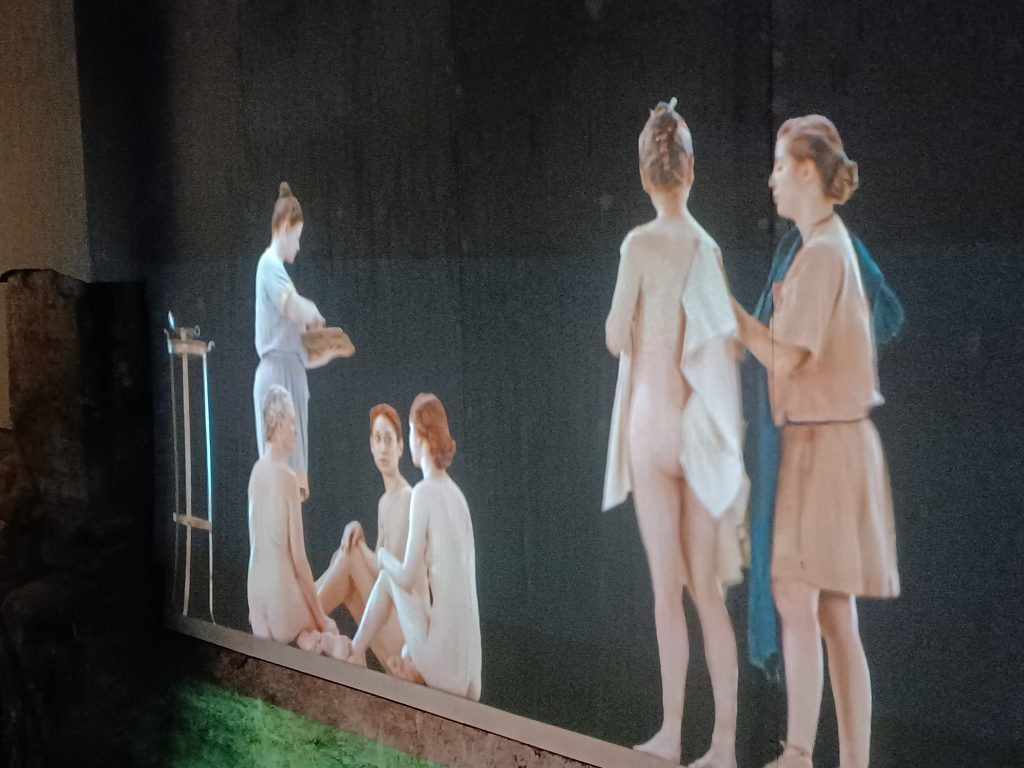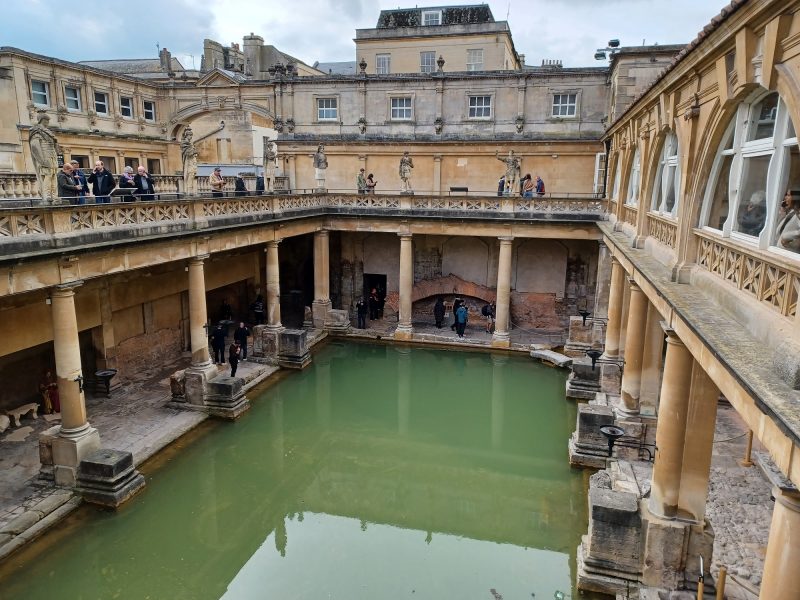Review: The Roman Baths in Bath
By Harry Mottram: Like so many in the city I just assume the Roman Baths are and always were there and a visit three decades ago will suffice as they don’t change. Wrong. I visited them as a school boy in the 1960s and again when we first had a car in the early 1980s before children and I rather innocently thought they would be un-changed. So much work has gone into restoring what lay hidden before and revealed in diagrams, videos and models how they once looked and were operated. Apart from the classic view of the bath exposed by 19th century archaeologists looking up towards the mock Roman statues and the Abbey above most of what I remembered has changed.
At around £24.50 a ticket and a queue to enter on a Friday afternoon in October the Romans must have wished they had held onto the rights as over a million people visited the baths last year. That would have bought a lot of chariots, resurfaced the Fosse Way to the coast and paid for a new galley powered cross channel link complete with slaves rowing across the choppy seas and a fast tracked journey to Rome. Instead the billion plus annual revenue helps Bath and North East Somerset Council keep the city and surrounding communities if not coming up roses then at least ticking over.

When I visited a busker in the Abbey Yard was working his way through some 1970s rock classics from Queen to Canned Heat – the sounds of which echoed over the main bath adding a slightly quirky tone to the scene as curious Japanese and Indian visitors took selfies and snaps of the faded statues. The weathered statues that look down on the greenish waters which my handset – free with a ticket – explained were Victorian replicas of Romans with Britannia connections. Claudius looked very depressed and the Roman Celtic Goddess Sulis Minerva had a distinctive disapproving expression – perhaps she preferred the music of the 80s and the sounds of Madonna.

As I followed the directions I slowly descended into the labyrinth of chambers where different parts of the excavated portals of the Roman Baths were displayed and placed in more or less the original positions – with projections and diagrams to illustrate how they would have been assembled. The overall feeling I had was a sense of disbelief that the Celtic and Romano British inhabitants of Bath allowed the baths, temples and buildings to sink into silt, neglect and collapse when the legions left. The idea that a wattle and daub round house with no under-floor heating, running water, toilets and tiled roofs was superior to the legacy of four centuries of Mediterranean civic engineering is a mystery. It was to take centuries for Bath to recover as a spa with paved streets and civic buildings that matched those of the Latin rulers.
There is a superb model of how the baths once looked and apart from being great PR for the Romans it’s also a wonderful piece of model making. The gilded head of Minerva is impressive in its glass case despite the best efforts of a Dark Age vandal to bash it in, and the head of the Gorgon – or take your pick from Oceanus, Borvo, Jupiter or some yet to be discovered Romano British water god – is displayed with a projection filling in the missing parts. It once looked down on all who entered the baths from the 100 foot high archway that once dominated the structures.

Videos of Romans or indeed Bathonians in togas gave a flavour of what the inhabitants wore and did for a living were displayed in various spots around the museum – including I might add some naked bathers– spoiler alert – posed by actors and all very modestly shot. But of course the Romans were rather more open about their bodies compared to prudish us in the 21st century with their communal toilets and naked bathing.
Countless coins and other everyday items from Roman Bath were displayed – but the star attraction was the spring with its steaming waters and drain taking excess water away to the River Avon. The King’s Bath not so. When I last visited it was open and at a higher level of water so you could dabble your hands in it. Fenced off so the pigeons can’t make its columns their roost of choice, it was a slightly sad spectacle with its limpid green surface- for understandably health and safety reasons. And that was what was missing – a chance to paddle, dabble or simple take a splash in the baths – with a handy slave to hold your toga as one dives in. With over a million visitors a year I suppose the baths would be rather difficult to patrol for the life guards so it’s more a chance to observe them rather than sample them. But you can have a cup of the health giving waters – which I did – and was surprised how refreshing a warm cup of mineral water can give you an inner glow on a cold October day. Those Romans were definitely onto something when they kicked out the Celts and built the baths around the hot waters bubbling out of the ground.
For more on the baths visit https://www.romanbaths.co.uk/

Bath Voice Monthly Newspaper is distributed free to thousands of homes and some supermarkets – distributed from the first of the month. Harry Mottram is the News Editor
Email him at news@bathvoice.co.uk Bath website: https://bathvoice.co.uk/news/
Bath Facebook: https://tinyurl.com/bdtf2kep Also on Twitter: https://twitter.com/bath_voice Read the newspaper online at :https://issuu.com/bathvoice
To advertise to thousands of Bathonians call Shaun on 07540 383870 or email him on sales@bathvoice.co.uk
Harry Mottram is a freelance journalist. Follow him on Facebook, LinkedIn, Twitter, Instagram, YouTube, Pinterest, Telegram, TikTok and Email:harryfmottram@gmail.com
Website:www.harrymottram.co.uk Mobile: 07789 864769


